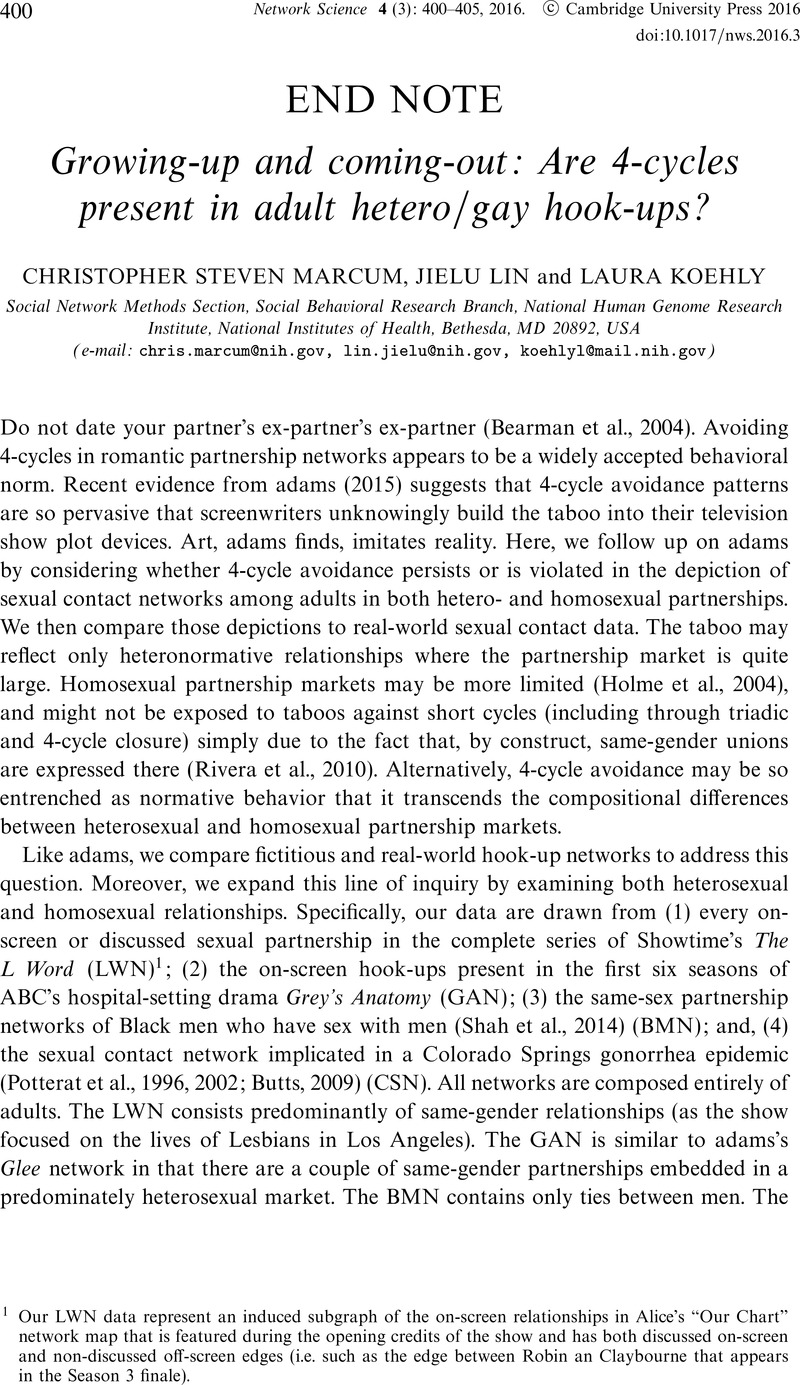Crossref Citations
This article has been cited by the following publications. This list is generated based on data provided by Crossref.
Lienert, Jeffrey
Koehly, Laura
Reed-Tsochas, Felix
and
Marcum, Christopher Steven
2018.
An Efficient Counting Method for the Colored Triad Census.
SSRN Electronic Journal ,
Lienert, Jeffrey
Koehly, Laura
Reed-Tsochas, Felix
and
Marcum, Christopher Steven
2019.
An efficient counting method for the colored triad census.
Social Networks,
Vol. 58,
Issue. ,
p.
136.
McMillan, Cassie
and
Felmlee, Diane
2020.
Beyond Dyads and Triads: A Comparison of Tetrads in Twenty Social Networks.
Social Psychology Quarterly,
Vol. 83,
Issue. 4,
p.
383.
Felmlee, Diane
McMillan, Cassie
and
Whitaker, Roger
2021.
Dyads, triads, and tetrads: a multivariate simulation approach to uncovering network motifs in social graphs.
Applied Network Science,
Vol. 6,
Issue. 1,
McMillan, Cassie
Kreager, Derek A.
and
Veenstra, René
2022.
Keeping to the code: How local norms of friendship and dating inform macro-structures of adolescents’ romantic networks.
Social Networks,
Vol. 70,
Issue. ,
p.
126.



